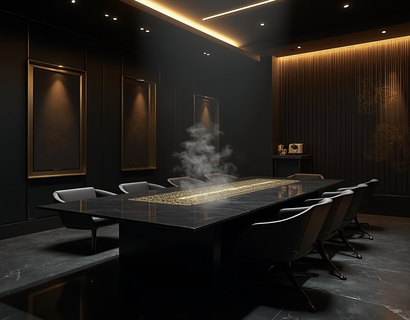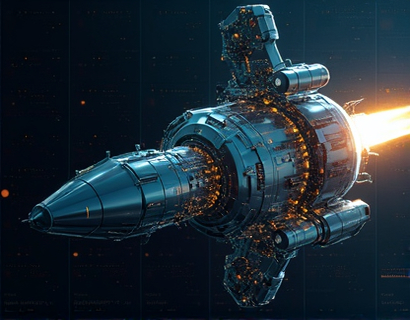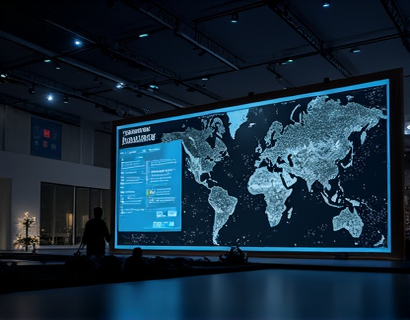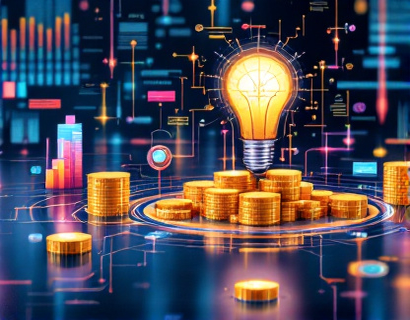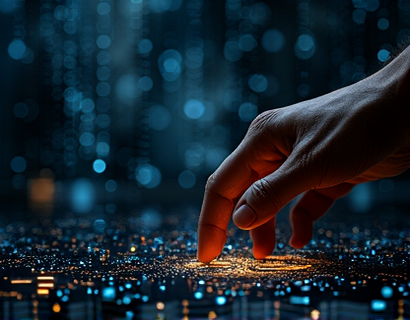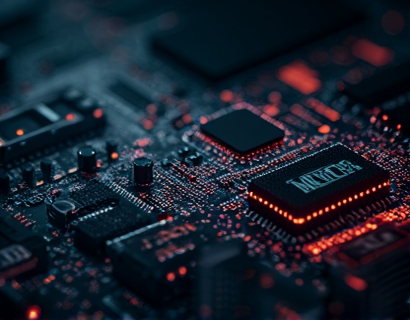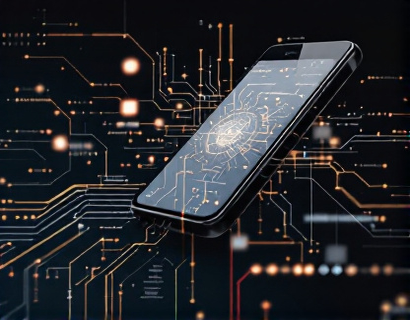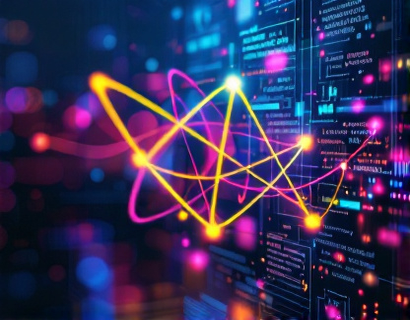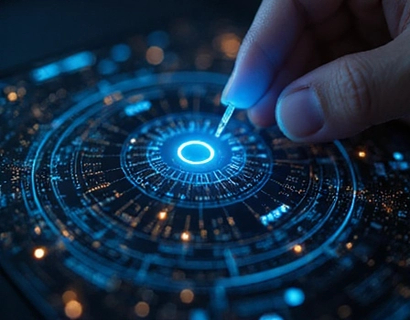Decentralized Innovation: Harnessing AI and Crypto for Next-Gen Digital Transformation
The intersection of artificial intelligence (AI) and cryptocurrency is giving rise to a new era of decentralized digital solutions. This convergence is not just a technological advancement but a paradigm shift in how we perceive and interact with digital ecosystems. The integration of AI and crypto is paving the way for more secure, efficient, and user-centric applications and services. This article explores the transformative potential of this synergy, focusing on advanced ecosystem integration and the future of decentralized innovation.
The foundation of this new digital landscape is built on blockchain technology, which provides a decentralized and transparent ledger for transactions. Blockchain's inherent security and immutability make it an ideal platform for integrating AI and crypto. By leveraging blockchain, decentralized applications (dApps) can operate without the need for intermediaries, reducing costs and increasing trust among users. AI, on the other hand, brings intelligence and automation to these systems, enhancing their functionality and user experience.
Enhancing Security and Trust
One of the most significant benefits of combining AI and crypto is the enhancement of security and trust in digital transactions. AI algorithms can detect and prevent fraudulent activities by analyzing patterns and anomalies in real-time. Smart contracts, self-executing contracts with the terms directly written into code, can be augmented with AI to ensure that all conditions are met securely and efficiently. This synergy reduces the risk of human error and malicious intent, creating a more reliable and trustworthy environment for users.
Moreover, blockchain's decentralized nature ensures that no single entity has control over the entire system. This distribution of power makes it extremely difficult for any one party to manipulate the system, further bolstering security. AI can monitor the blockchain for any suspicious activity, providing an additional layer of protection. The combination of AI and blockchain thus creates a robust framework for secure and trustworthy digital interactions.
Optimizing User Experience
The integration of AI and crypto is not only about security; it's also about enhancing the user experience. AI-driven analytics can provide deep insights into user behavior and preferences, allowing developers to tailor applications and services to meet specific needs. Personalization is key in today's digital world, and AI can deliver highly customized experiences that keep users engaged and satisfied.
For instance, AI can analyze user interactions with a dApp to predict and suggest relevant content or services. This level of personalization is particularly valuable in decentralized finance (DeFi) platforms, where users can access a wide range of financial services. AI can help streamline these services, making them more intuitive and user-friendly. Additionally, AI-powered chatbots and virtual assistants can provide 24/7 support, addressing user queries and issues in real-time.
Crypto assets, such as non-fungible tokens (NFTs) and tokens representing unique digital assets, can be managed and traded more efficiently with AI assistance. AI can automate the process of verifying ownership and authenticity, reducing the complexity and time required for these transactions. This not only enhances the user experience but also opens up new possibilities for creators and artists to monetize their digital assets.
Driving Innovation and Efficiency
The combination of AI and crypto is driving innovation across various industries, from healthcare to supply chain management. In healthcare, AI can analyze vast amounts of medical data to identify patterns and predict outcomes, while blockchain ensures the secure and privacy-preserving storage and sharing of this data. This integration can lead to more accurate diagnoses, personalized treatment plans, and efficient drug development processes.
In supply chain management, blockchain provides a transparent and immutable record of transactions, while AI can optimize logistics and inventory management. AI algorithms can predict demand, optimize routes, and reduce waste, leading to more efficient and cost-effective operations. The decentralized nature of blockchain ensures that all parties in the supply chain have access to the same information, reducing disputes and increasing trust.
Another area where AI and crypto are making a significant impact is in the Internet of Things (IoT). IoT devices generate massive amounts of data, which can be overwhelming to manage and analyze. AI can process and interpret this data in real-time, providing actionable insights. Blockchain can secure the data transmission between IoT devices and ensure that only authorized parties access the data. This synergy enables the creation of smart, autonomous systems that can operate with minimal human intervention.
Advanced Ecosystem Integration
The true potential of AI and crypto is realized when they are integrated into advanced ecosystems that connect various apps and services. These ecosystems are designed to be interoperable, allowing different platforms and applications to communicate and work together seamlessly. This interoperability is crucial for creating a cohesive and user-friendly digital experience.
One of the key technologies enabling this integration is the use of decentralized networks and protocols. These networks allow different dApps to interact with each other without the need for central authorities. AI can facilitate this interaction by providing intelligent routing and data management, ensuring that information flows smoothly and efficiently across the ecosystem. This not only enhances the functionality of individual apps but also creates a more robust and resilient overall system.
Tokenization plays a vital role in this ecosystem integration. Tokens can represent various assets, from digital content to real-world objects, and can be used to facilitate transactions within the ecosystem. AI can optimize token distribution and usage, ensuring that the ecosystem remains balanced and fair. For example, AI can dynamically adjust token rewards based on user engagement and contribution, incentivizing active participation and fostering a vibrant community.
Challenges and Considerations
While the potential of AI and crypto integration is immense, there are several challenges and considerations that need to be addressed. One of the primary concerns is regulatory compliance. The decentralized nature of blockchain and the cross-border nature of crypto transactions can complicate regulatory frameworks. Developers and organizations must navigate these regulations carefully to ensure compliance and avoid legal issues.
Another challenge is the technical complexity involved in integrating AI and crypto. Developing robust and secure systems requires expertise in both domains, which can be a barrier for some developers. Education and collaboration are essential to overcome this challenge. Communities and platforms like the one described in this article can play a crucial role in fostering knowledge sharing and best practices.
Scalability is also a significant consideration. As the number of users and transactions grows, the system must be able to handle increased load without compromising performance. AI can help optimize resource allocation and manage load balancing, but the underlying infrastructure must be designed to scale effectively. Blockchain technology is continually evolving to address scalability issues, with layers and sidechains being developed to enhance transaction throughput.
Future Prospects
The future of decentralized innovation through AI and crypto integration is promising. As technology continues to advance, we can expect even more sophisticated and seamless integrations. The development of more user-friendly interfaces and tools will make it easier for non-technical users to engage with these systems. This democratization of technology will broaden the adoption and impact of decentralized applications and services.
Moreover, the convergence of AI, crypto, and other emerging technologies like quantum computing and edge computing will open up new possibilities. Quantum computing, with its ability to process complex calculations at unprecedented speeds, can enhance the capabilities of AI algorithms. Edge computing can reduce latency and improve the performance of IoT devices, making real-time data processing more feasible.
The potential applications are vast, ranging from decentralized social media platforms that prioritize user privacy to decentralized autonomous organizations (DAOs) that enable community-driven governance. The integration of AI and crypto will continue to drive innovation, creating a more decentralized, secure, and user-centric digital world.
In conclusion, the combination of AI and crypto is revolutionizing the digital landscape, offering a path to more secure, efficient, and engaging decentralized solutions. By addressing the challenges and embracing the opportunities, we can unlock the full potential of this synergy, paving the way for a transformative future in digital transformation.




